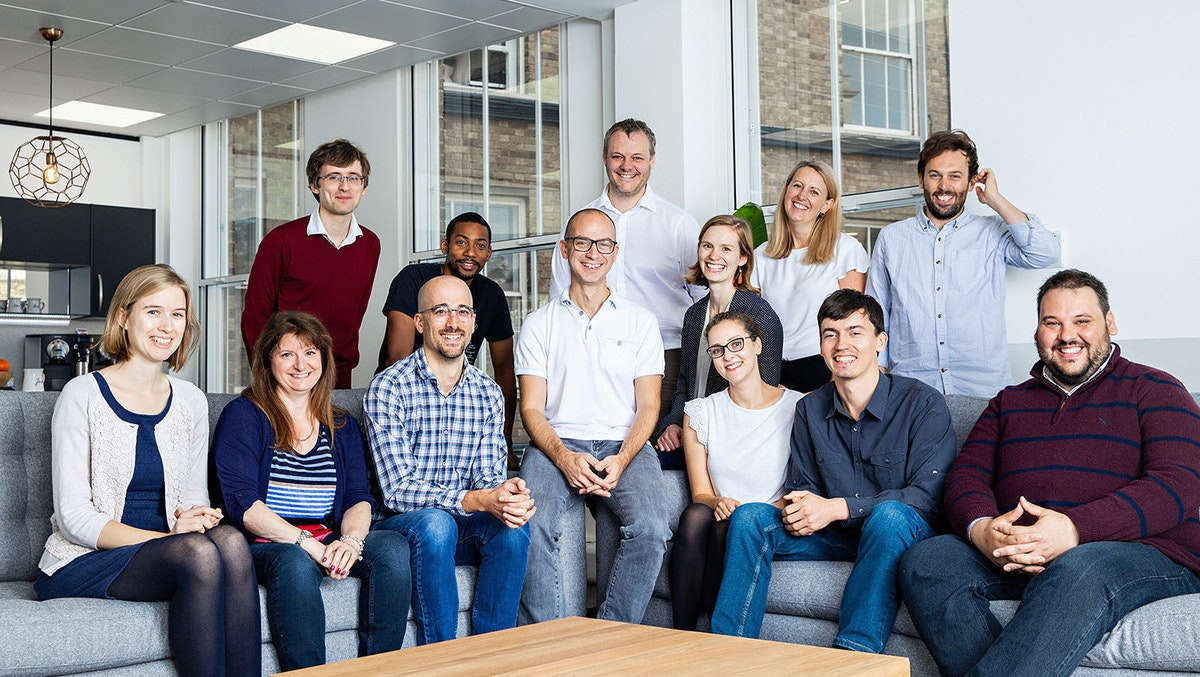Supercomputing is the latest technology to join the global search for an effective coronavirus treatment.
Japanese technology company Fujitsu has partnered with US biotech startup Polaris to create a new supercomputer-based drug discovery platform that promises to substantially speed up the process of discovering new treatments for hard-to-treat diseases.
Dengue is a hard nut to crack. Being successful in this area would be a very powerful statement.
Covid-19 and dengue fever — for which there is also no cure yet — are the first challenges that Fujitsu has set for the platform. Picking these highly public and difficult disease challenges is a way of proving that the new platform has something new and different to offer the pharmaceuticals industry.
“Dengue is a hard nut to crack and a lot of people have tried. Being successful in this area would be a very powerful statement,” says David Snelling, director of Fujitsu’s artificial intelligence programmes, who is leading the UK-based project.
Fujitsu has a lot to prove when it comes to healthcare. This is the company’s first foray back into the industry, since an attempt in the early 2000s to install a new IT system for the UK’s National Health Service went disastrously wrong, resulting in a decade-long legal dispute for Fujitsu. The company was, understandably, nervous about getting into this area again.
“The team in Japan has been looking at the healthcare market for some time. But there was, understandably, this hesitancy in the UK business,” says Snelling.
So how do you launch into a new market — especially when there is so much baggage involved?
Fujitsu’s answer was to do it through a partnership with a startup that could bring in the healthcare expertise that Fujitsu was lacking.
How the technology works
Drug discovery could be an ideal application for Fujitsu’s new digital annealer, a technology that borrows some of the principles of quantum computing but provides them through a supercomputer, available today. Much-hyped quantum computing is still largely at an experimental stage and it could be years before it becomes commercially usable.
“Quantum computing will be real and will be quicker than this when it arrives, but quantum annealers are not yet ready for the primetime. There are no bets when their performance will beat us,” says Snelling.
The digital annealer has helped BMW robots to weld the bottom of a vehicle in 70 seconds.
So far the digital annealer, launched a year and a half ago, has been used for manufacturing functions, such as speeding up the welding robots on BMW’s car factory assembly line. Choreographing the balletic movements of the welding arms so that they work at maximum speed while not crashing into each other is a complex calculation that is difficult to do through normal computing power.
“It is easy to get a workable solution where it takes about 200 seconds to weld the underside of a car. You can do that almost manually. But to speed it up you need to calculate hundreds of thousands of combinations of movements,” says Snelling. Shaving the welding time to just 70 second may not sound like much, but has allowed BMW to increase production without having to build new manufacturing facilities.
Drug discovery is an area where processes could be speeded up by an even larger margin, says Snelling.
Getting a new drug to market is a process that takes around 10 years and costs more than $1bn. This is part of the reason why the list of approved drugs is surprisingly short — only around 2,000 or so.
Discovering completely new drugs is a long process of looking at fragments of molecules to find ones that would be the right shape and size to work on a particular virus. Using conventional methods, it usually takes around two years to identify a molecule combination that is worth taking through to further clinical testing.
It could cut nearly two years from the drug discovery process.
The digital annealer can cut that down to just seven weeks, says Snelling. The system will analyse around 4.5tn molecule fragments and narrow them down to around 1,000 with the right shape and properties to be worth investigating further. Fujitsu then works with biotech startup Polaris, which uses machine learning to further narrow these down to 10 or so that merit lab testing.
Other technologies, such as artificial intelligence, are also promising ways to cut down on the initial phases of drug discovery by similarly impressive amounts of time.
But the two processes work slightly differently. AI tends to focus on looking through existing libraries of drugs and drug fragments to find ones that could work on a particular disease. Such libraries — though vast — are ultimately limited. When it comes to looking for entirely new fragments from trillions of hypothetical combinations, the brute force of a supercomputer comes into its own.
"It has intrigued people. Everyone has been talking about AI and machine learning, but combining AI and machine learning with quantum-inspired technologies is something new," says Patrick Stephenson, director of innovation and healthcare at Fujitsu.
The Fujitsu team is hoping to have the first molecules for dengue fever drugs ready to test this month and the potential Covid-19 drug candidates later this summer.
The startup partnership
Working with a startup in this way is new to Fujitsu.
"Like some of the more agile corporates, Fujitsu is shifting from the assumption that it needs to build everything in-house", says Matthieu Vallin, senior manager at Sia Partners, the innovation consultancy that helped take Fujitsu into the life sciences market.
“We advised them to enter the market with the right partners, moving away from the idea of owning the whole proposition,” says Vallin. Partnering with a startup would be a much quicker way into a new market than starting from scratch in house.
Both sides had to learn to speak each other’s language.
Sia scouted and short-listed potential startup partners for Fujitsu and the team selected the right partner by holding a series of workshops with the potential candidates. The technical fit with Polaris was the best, and Fujitsu got the project up and running within six months — almost lightning speed for a corporation of that size.
The process has not been without some friction. Fujitsu’s existing procurement systems were not suited to working with a startup of Polaris's size. Suppliers usually have to demonstrate that they have revenues, capital investment and a certain board structure — none of which were necessarily things that a small startup would have. “So everything had to be put through as an exception,” says Snelling.
On the other hand, sometimes Fujitsu found it frustrating to be dealing with a small company with just a part-time lawyer to handle setting up the partnership agreement.
Both sides had to learn to speak each other’s language. Sia Partners even helped hire a computational chemist to help Snelling understand the healthcare terminology. “It was so I didn’t have to ask stupid questions. That helped establish credibility,” he says.
In the end, it is about the human side.
Part of what kept the partnership on track was a strong rapport between Snelling and Shahar Keinan, Polaris’s founder and chief executive — with twice-weekly meetings to keep both sides up to date on the project.
“In the end, it is about the human side,” says Vallin. “The technical fit is important but the cultural fit - though harder to measure - can make or break a new venture”
It also helped that engineers have a reasonable amount of clout at Fujitsu. Snelling, for example, is one of a small group of highly respected Fujitsu Distinguished Engineers, who are given a certain amount of leeway to shake things up at the company. A company where the accountants and business managers called all the shots might have been less keen to take a risk like this, observes Snelling.
But will it work?
Despite getting a reasonable amount of leeway from top management, Snelling says he is still under pressure to show the healthcare project can deliver a return on investment in “months rather than years”. Given that the pharmaceuticals industry moves relatively slowly, he admits this may prove to be a challenge.
“We are not talking years, our targets are in months. We are being forced to move quickly on this,” he says. “ If it can’t show a return, the project will be killed.”
Stephenson says he is looking for revenues to start coming in by March next year, and the company expects a return on investment in the project in three years.
The first milestone will be getting dengue fever drugs into lab testing this summer.
Cracking dengue fever or coronavirus would be a big proof point for the project. Dengue fever is thought to date back to before 420 AD, infects around 100m people and kills some 22,000 people a year, but a cure has so far eluded scientists. Helping find one — or contributing to finding a coronavirus drug — would be a huge win for supercomputing.


